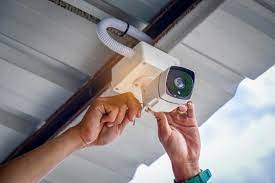Home security is paramount in today’s world where safety concerns are prevalent. One of the most effective ways to enhance home security is by installing a home security camera system. These systems provide homeowners with peace of mind and a sense of control over their property, whether they are at home or away. In this article, we will discuss the steps involved in installing a home security camera system, along with important considerations and tips to ensure optimal security.
Types of Home Security Camera Systems
Before delving into the installation process, it’s essential to understand the different types of home security camera systems available. There are two primary categories: wired and wireless systems. Wired systems require physical connections to power sources and recording devices, while wireless systems operate using Wi-Fi connectivity. Additionally, cameras can be categorized as indoor or outdoor, with outdoor cameras designed to withstand various weather conditions.
Factors to Consider Before Installation
Several factors should be considered before purchasing and installing a home security camera system. Firstly, budget considerations are crucial, as prices can vary depending on the brand, features, and number of cameras needed. Secondly, homeowners should identify their desired features, such as night vision, motion detection, and remote access capabilities. Lastly, the layout and size of the home will determine the number and placement of cameras required for comprehensive coverage.
Steps to Install a Home Security Camera System
Planning and Preparation
Before installation, it’s essential to create a comprehensive plan that includes the placement of cameras, power sources, and recording devices. This plan should take into account potential blind spots and areas of vulnerability around the property.
Camera Placement
Careful consideration should be given to the placement of cameras to ensure maximum coverage and effectiveness. Key areas to cover include entry points such as doors and windows, as well as high-traffic areas within the property. Outdoor cameras should be positioned strategically to capture clear footage while minimizing the risk of tampering or damage.
Power Source and Connectivity
Wired cameras require access to a power source, which may involve drilling holes or routing cables through walls. Wireless cameras rely on batteries or solar panels for power, offering greater flexibility in placement but requiring regular maintenance to ensure continuous operation. Additionally, cameras need to be connected to a recording device or cloud storage service to store footage securely.
Network Setup
For wireless systems, a stable Wi-Fi network is essential for reliable connectivity and remote access. Homeowners should ensure that their network router is positioned centrally and equipped with sufficient bandwidth to support multiple camera connections. Network security measures should also be implemented to prevent unauthorized access to camera feeds.
Testing and Adjustments
Once the cameras are installed and connected, thorough testing should be conducted to verify their functionality and coverage. This may involve adjusting camera angles, sensitivity settings, and recording preferences to optimize performance. Regular maintenance and updates should be performed to keep the system operating efficiently over time.
Additional Tips for Optimal Security
In addition to installation and setup, there are several tips for maintaining optimal security with a home security camera system. Regularly inspecting and cleaning cameras to ensure clear visibility is essential for capturing accurate footage. Furthermore, integrating the camera system with other smart home devices such as motion sensors and alarms can enhance overall security measures.
Conclusion
Installing a home security camera system is a proactive step towards safeguarding your home and loved ones. By following the outlined steps and considering key factors such as camera type, placement, and network connectivity, homeowners can create a robust security system tailored to their specific needs and preferences.

